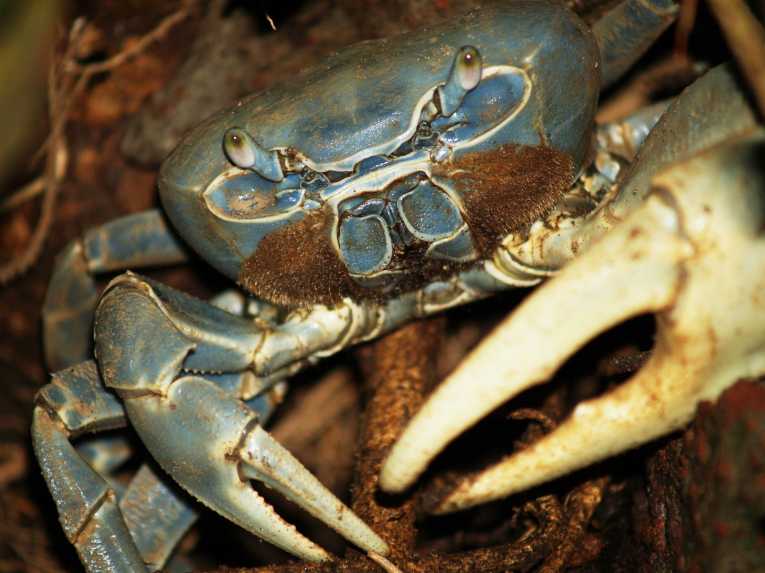A new species of large carnivorous crabs, that roamed far inland all over the Hawaiian islands, has been confirmed in a new paper - using the thousand-year old remains of crab shells scattered across the islands.
The University of Florida researchers, who identified the latest member of the land crab family, say it was man's arrival that may have led to the demise of this ecologically important predator. The paper describing the new species is to appear in today's edition of the open journal PLoS ONE.
The remains of the crab, christened Geograpsus severnsi, have long been picked up from inland areas of the island chain; but the team's detailed analysis of the shell fragments show that they come from a species entirely unique to Hawaii.
They believe it was one of the species of land crab that wa best suited to living off of the land - and would have eaten everything from seeds and plants, to insects and even nesting sea-birds.
But about 1,000 years ago, the crabs abruptly disappeared from the island's ecosystem - a timing that carbon-dating shows to coincide with the arrival of Polynesian colonizers from the west.
Because these new arrivals bought with them new forms of predator, the specialized land crab, used to no other competition, was likely subject to competitive pressure - and possibly provided an easily harvested food resource for the newly-settled human communities.
Lead author Gustav Paulay from the Florida Museum of Natural History saw major changes from man's arrival. He said ''When people arrive on an island, initially it's like the Garden of Eden - few people and lots of resources. I can imagine a period when humans and the introduced rats, dogs and pigs would have preyed heavily on the crabs, especially during their mass migrations to release larvae in the ocean.''
The scientists can't be sure exactly what caused their extinction, but the reason they disappeared from the Hawaiian Islands, whereas other land crabs on other Pacific islands survived, may be related to their size - they were one of the largest species of land crab yet found. Because such small islands generally only receive bits and pieces of the ecosystem typically found in larger land areas, certain cogs in the system - like Geograpsus severnsi - may be poorly adapted to deal with new threats.
Their loss likely to have had a big impact on the natural balance seen on the Hawaiian Islands today. Paulay said ''The loss of this crab from areas has led to change in the structure of the forest because the crabs controlled litter and ate the seedlings of weeds. We don't know the full ecological impact of all these land crabs, but we know that on islands, it's usually substantial.''










